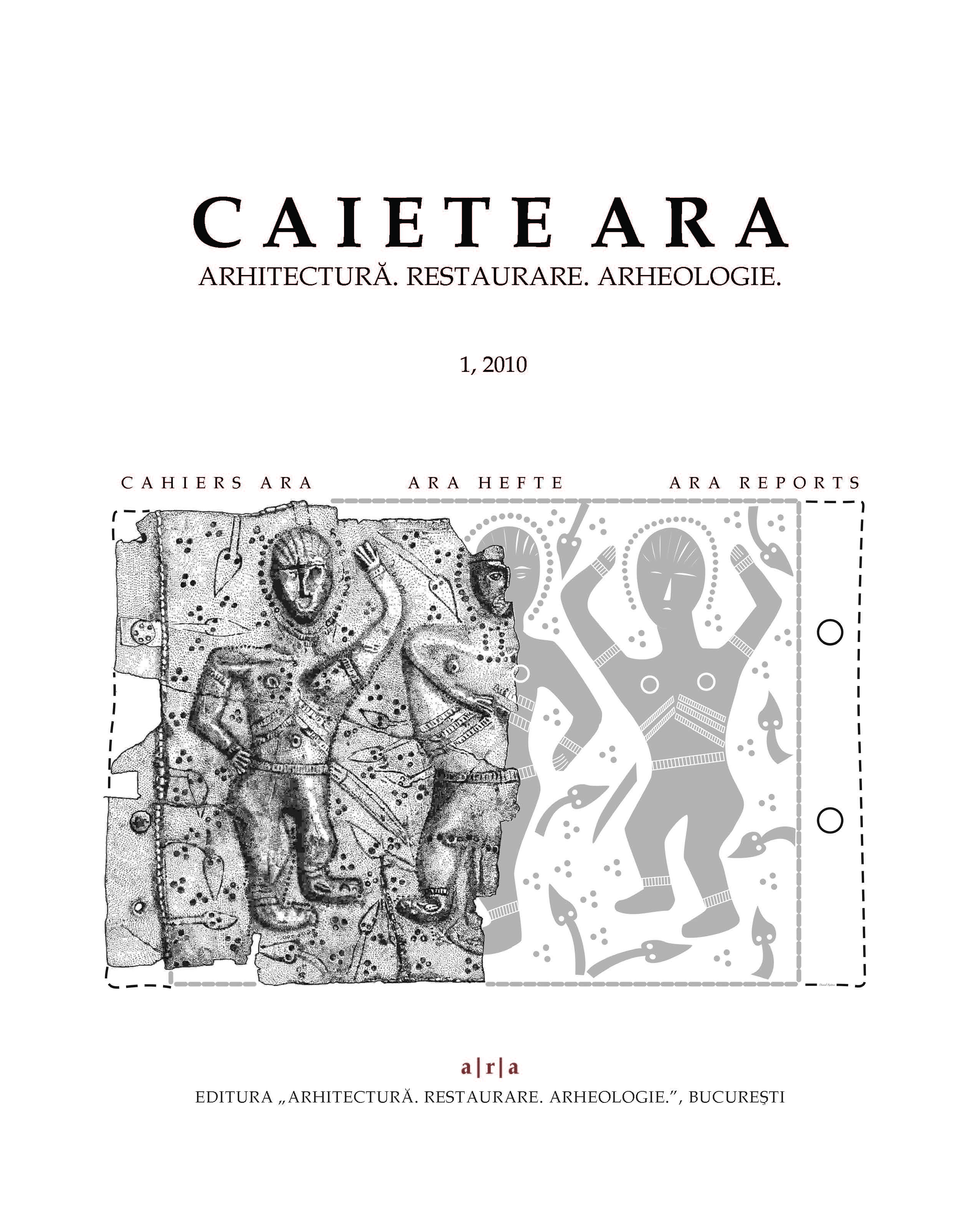Centrul istoric al Bucureștilor.
Historical center of Bucharest.
The archaeological researches from 2007-2009. Questions of restoration-conservation-salvage
Author(s): Gheorghe Mănucu-Adameşteanu, I. Panait Panait, Andrei Măgureanu, Adina Boroneant, Elena Gavrilă, Theodor Ignat, Raluca Popescu, Dorin Sârbu, Meda ToderașSubject(s): History, Archaeology, Fine Arts / Performing Arts, Architecture
Published by: Editura "Arhitectură. Restaurare. Arheologie"
Keywords: protected areas; monuments; inns; fresco; princely court wall; wooden pavement.
Summary/Abstract: In 2007 started the Project for the Street and Utilities Rehabilitation – Pilot Area – The Historic Centre of Bucharest over an area bordered by Victoria Avenue – Brătianu Boulevard – Lipscani Street – Independence Boulevard. On nine streets (21763 m2) numerous buildings (brick or wood) were identified, as well as cemeteries and various structures of public or private character. Some of them are better known, such as the inns on Lipscani Street, some of them aren’t, but all of them together tell the story of the birth and development of a town. Zlătari Inn. During the 2007 campaign of archaeological excavations, a very interesting situation presented itself in the sector of Lipscani Street bordered by Victoria Street and E. Carada Street: the remains of one of the most famous inns in Bucharest, next to the basement of a house pulled down at the building of the inn. Due to the special situation both from the archaeological and architectural point of view, and the conservation state being very good, this particular area (Zlătari Inn, on a length of 25 m and the 17th century house on a length of 13 m) was the first one proposed for conservation, restoration and public display. First stage consists in ensuring the protection of the area. Gabroveni. During the second year of the project Gabroveni Street was excavated. Known for many years as “the street running parallel to the Princely Court wall”, Gabroveni Street was one of the main arteries within the commercial center of Bucharest. The archaeological excavations led to the uncovering of some wooden houses – predating the present day street space, of the wooden palisade of the Princely Court, of the brick wall later replacing the palisade, of the buildings adjacent to the precinct wall and of the wooden pavement of the street. In one of the sections, the Princely Court wall and the wooden pavement were exceptionally well preserved. First measures for a protected area in Gabroveni Street have already been taken: the restoration and conservation of the wooden pavement segment described above. The action was performed by the specialists of the “Bucovina” Museum Complex from Suceava. Şerban Vodă. For two centuries (18th-19th) one of the most imposing buildings of Bucharest, the Şerban Vodă Inn was forgotten after its demolition for the whole following century (20th). The 2007 archaeological excavations taking place on the Lipscani Street, sector between Eugeniu Carada and Smârdan Streets, brought to light the Lipscani side of the inn. During the next year (2008), it was possible to explore the interior of the inn, as a series of foundations from the inn’s first floor were identified, together with a number of six cellars and the access way from the street. The area proposed for conservation covers the area of the six cellars mentioned above, some of the best preserved medieval structures in the historic center of Bucharest. In the passageways between the cellars, three frescoes were uncovered: two represent St. Nicholas and the third depicts “The Dormition of the Virgin”. Considering the technique and style they date to the second half of the 17th century. Conclusions. The three areas proposed for conservation - restoration - public display were accepted by the National Commission of Archaeology and the National Commission for Historic Monuments. They were also included in projects developed by the Municipality of Bucharest, the beneficiary of the Historic Centre works. They represent cultural landmarks both for the locals and the foreign tourists, often amazed and impressed by the things hidden until recently under the modern pavement of the Historic Centre.
Journal: Caiete ARA
- Issue Year: 2010
- Issue No: 1
- Page Range: 109-118
- Page Count: 10
- Language: Romanian
- Content File-PDF

